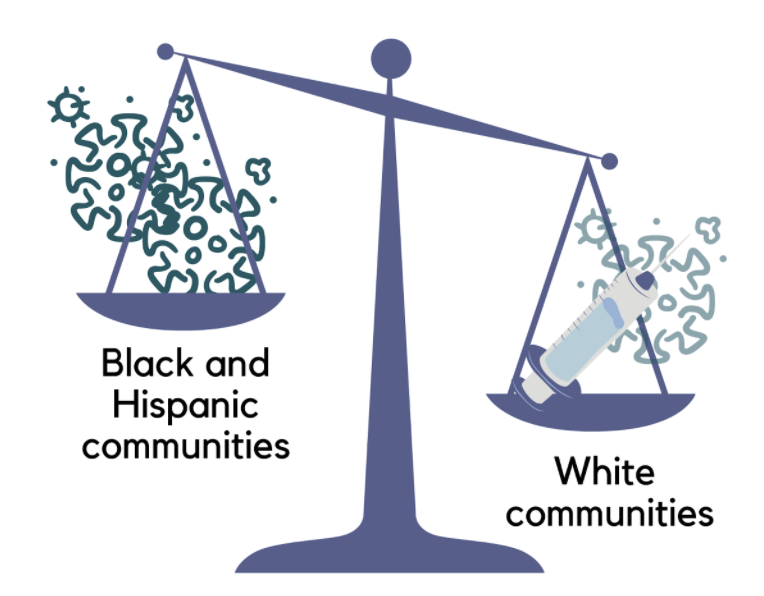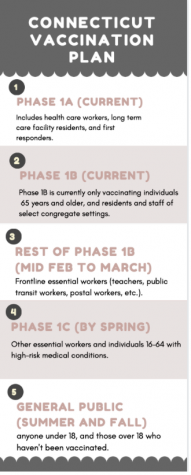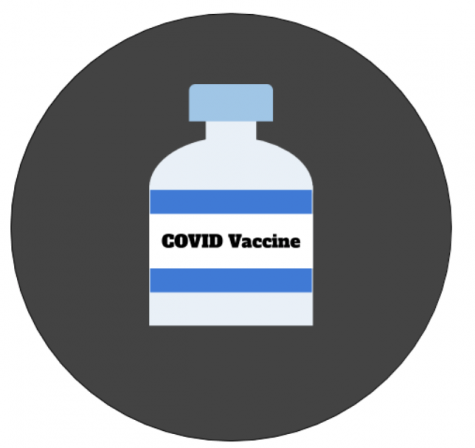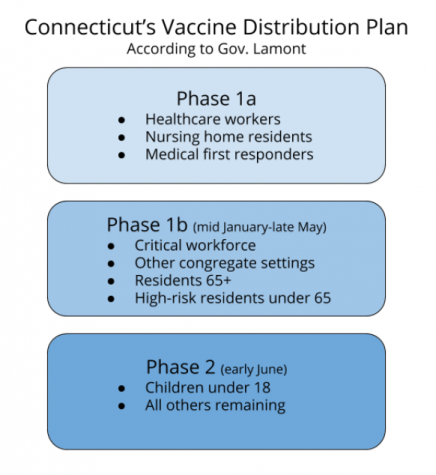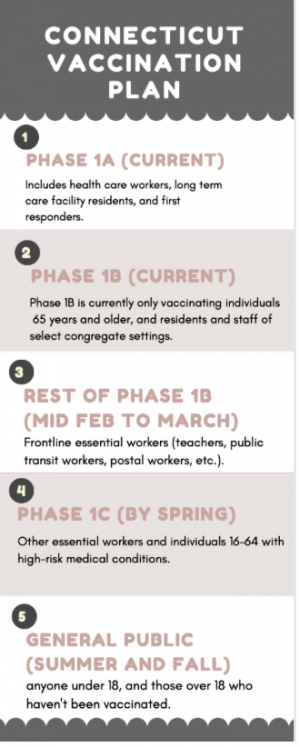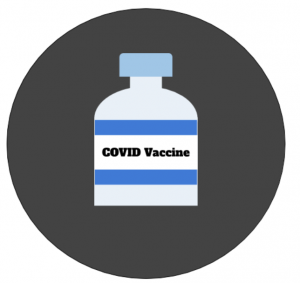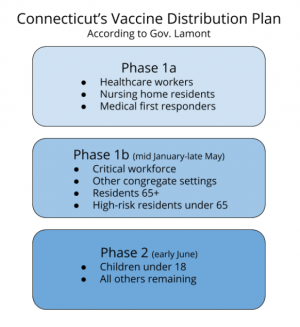Disparity in vaccine distribution must be addressed, eliminated
According to the CDC, Black, Hispanic and Native American people are dying from Covid-19 three times faster than white people. However, they are getting inoculated much less.
The Covid-19 pandemic has disproportionately affected Black and Latinx communities nationwide, yet the vaccine rollout does not accommodate this. According to the Kaiser Family Foundation, vaccines are being made more readily available to wealthy white communities.
I believe state governments must structure their vaccine distribution plans in a way that favors communities in greater need of the vaccine in order to eliminate this disparity.
[F]ears of deportation hinder [Latinos’] decision to get the vaccine; for Black Americans, a history of discrimination in the healthcare industry contributes to the disparity as well.
The divide is largely due to vast differences in socioeconomic status which make it harder to access quality healthcare and accurate news and information. Rampant mistrust is also common during times like these. According to the Associated Press, for many Latinos, fears of deportation hinder their decision to get the vaccine; for Black Americans, a history of discrimination in the healthcare industry contributes to the disparity as well.
The Associated Press also reports that the Biden administration is taking initiative by encouraging state governments to prioritize the distribution of the vaccine based on factors of poverty, housing, race, etc. On the part of the federal government, I believe their response is adequate.
An advised tool is the CDC’s social vulnerability index, a database that provides a variety of factors to consider pertaining to each community across the nation. Despite this, state governments have not released any data indicating that the distribution is being altered to take this significant disproportion into account.
The reason I believe this responsibility falls upon state and local governments is because they understand their communities and people on a more relevant and specific level compared to the federal government and can therefore better provide the care that their people deserve and are entitled to.
If this is not addressed, I fear that our country could suffer preventable losses of human life and health. It is crucial for our society to understand and recognize the systemic racism present and to call out state and local officials on their responsibility to account for the disparity.

Paper Managing Editor, Mishael Gill ’23 is all about helping people. She plans to advance into the pre-med track next year in college.
Currently,...












































